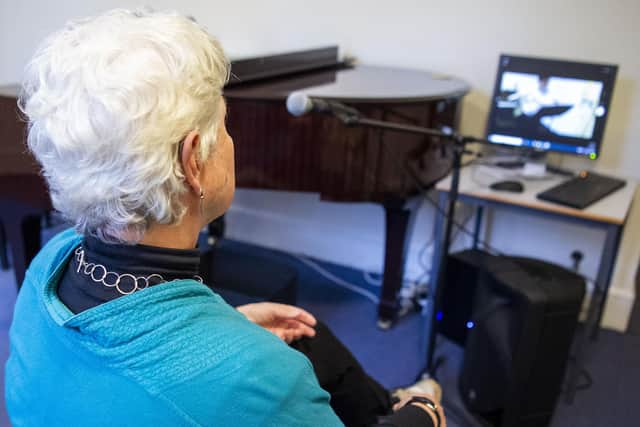Lessons through the wall - school finds a way to teach woodwind instruments during pandemic
She did not expect to end the year with holes drilled in the walls of classrooms so that pupils could continue to learn.
Schools have been one of the settings most affected by Covid-19 with thousands of children being taught online during the first wave.
Advertisement
Hide AdAdvertisement
Hide AdBut some aspects of education are more compatible with lockdown than others, and practical activities such as music teaching - especially that of musical instruments - presented a particular challenge.


Like everyone else St Mary’s Music School turned to online lessons during the initial lockdown, but teachers had to cope with less than perfect sound quality and an inevitable time lag which made accompanied playing impossible.
With government guidelines against anyone else being in the room when a pupil is playing, it seemed like this would be the only option for woodwind instruction - until the school came up with an innovative solution.
Holes were drilled into the wall between the two rooms, limiting the flow of air and potential contamination but allowing a live link to be set up with computers, cameras and microphones, and crucially allowing sound to travel in real time without the delay caused by video call.
This “fabulous” solution has allowed lessons to continue, and is an improvement on the choice between unaccompanied playing on Zoom or a room full of masked, socially-distanced students attempting to improve their flute technique without the instruments.
Ms Dooner said she was “pleasantly surprised” at how much the students’ playing improved during the lockdown period when they had only Zoom to work with, but that the arrangement had its limitations.
“As human beings we derive a powerful and fundamental benefit from seeing and interacting with people ‘for real’,” she said.
“As musicians, that need is even more palpable and is core to how we develop and grow our craft. As a teacher it is a hugely important part of what we do and how we teach. I was really delighted, therefore, when the school came up with a solution.
Advertisement
Hide AdAdvertisement
Hide Ad“At the start of term I came in to school to hold a class that was just about movement away from our flutes, masked and socially distanced. This activity enabled myself and my pupils to be in the same room together, and we could connect and speak to each other, which did us all the power of good!
“But the next step we introduced, of teacher and pupil being in adjacent rooms, with the pupil on their flute on one room and me on the piano next door, meant that we created a situation in which we can actually listen, hear and play in real time with each other, which is fabulous.”
Scotland’s exam body faced was ridiculed by some in November when it suggested that woodwind, brass or music students could consider learning a different instrument in the months leading up to their exams to limit the impact of Covid-19.